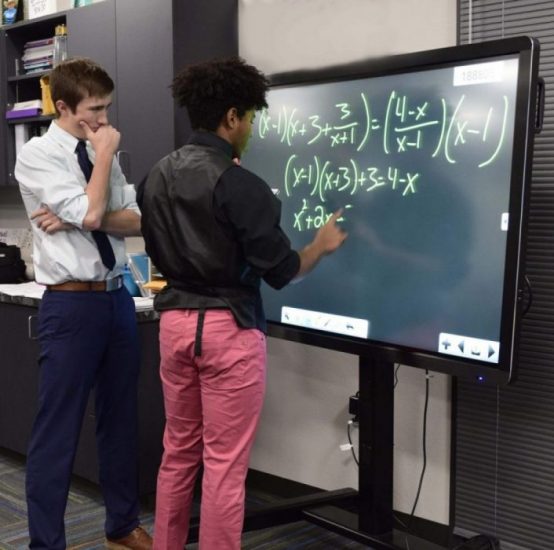What is Incubator EDU?
Incubator EDU is an advanced educational program designed for high school students. Those in the program learn a comprehensive set of entrepreneurial skills, all guided by coaches and mentors that have been there and done it. Incubator EDU isn’t just a set of lectures or reading assignments. This is a full entrepreneurial program that challenges students to design and develop a product or service, learn how to best approach its production and figure out the marketing and branding side. There’s a great deal of hypothesizing, adapting and testing involved, and it’s all applicable to the real world, so students are fully equipped to start their own business. Incubator EDU is lauded for its active learning approach, as students must interpret what they learn, apply it to their own test startup and adapt to any challenges along the way.How can A/V technology assist with Incubator EDU programs?
Incubator EDU is already in place in many school districts around the U.S., and that list will likely expand with time. The same has been true with A/V technology and education. A/V solutions have quickly moved into school districts all over the country, as educators have realized its potential. The match between Incubator EDU and A/V solutions is a perfect one. Why does A/V fit so well with Incubator EDU? There are several reasons, as lined out below.A/V technology fosters active learning
A/V technology and Incubator EDU are both compelling educational options for districts. In short, it’s because students learn better and learn more relevant material when they have access to either. With access to both, students can get more from Incubator EDU and its valuable lesson material. Here’s how:1. A/V technology encourages active learning methods – A/V technology and Incubator EDU both prioritize active learning, and together, they can take this concept to new heights.
Active learning is nothing new for educators, but it’s quickly gaining steam around the world. There’s good reason for this, as active learning methods are superior to traditional teaching methods in boosting performance and material recall among students. Consider, for example, that people can only recall about 10 percent of what they read and hear. Active learning methods are designed to enhance student recall. For instance, students that immediately practice what they learn with the help of a coach recall 75 percent or more of what they are exposed to. The difference is enormous.
During Incubator EDU coursework, students can get more from a lesson with an interactive flat panel. Interactive flat panels are ideal for collaboration, organizing thoughts, quickly searching the internet for inspiration or examples and presenting material. All of these are essential to Incubator EDU lessons, which are heavily focused on group collaboration, creative thinking and advanced problem solving. An interactive flat panel accelerates the pace at which teams can perform, and ensures a more compelling learning environment for the students.
2. A/V technology can better connect students and coaches – The Incubator EDU program relies on volunteer coaches and mentors to steer students in the right direction. With their guidance, students can endeavor to take chances and even make mistakes, which only fortify future learning experiences.
Ideally, students should have access to as many coaches and mentors as possible, and be able to connect with them when needed. A video conferencing system can make this much easier to handle. If a coach or mentor cannot be present at the school during Incubator EDU coursework, perhaps they can connect to the group via video conferencing. Modern video conferencing solutions are simple to use and can be easily preconfigured so students don’t have to mess with any settings before launching a call. It may not be quite as effective as having the coach in the room, but it’s close, and may make it easier for coaches and mentors to dedicate their time to the class.
3. A/V technology makes it easier for educators to monitor student progress – Incubator EDU challenges students to take an assertive role in their own education. That means students will likely progress at different speeds as they maneuver their way through the course. And that means teachers have their work cut out for them, because they have to keep students on task and humming along without interfering too much.
A/V technology allows educators a clearer picture of what’s going on with each group. Interactive flat panels can be quickly read from a distance, so if there is a group that’s taking too long to get going on collaboration, it will be immediately obvious to the educator. This allows for greater responsiveness to student needs without having to stand over their shoulders.
4. A/V technology gets students used to modern business practices – Many entrepreneurs are experimenting with software to bring their ideas and creations to life. It doesn’t make sense, then, to confine students to traditional learning tools when they are attempting to learn something with real-world applications.
Interactive flat panels, again, get students used to putting together design documentation, searching for relevant examples online and presenting a proposal with modern presentation tools.



